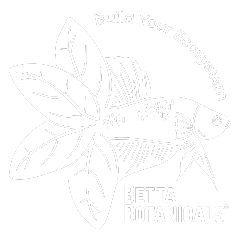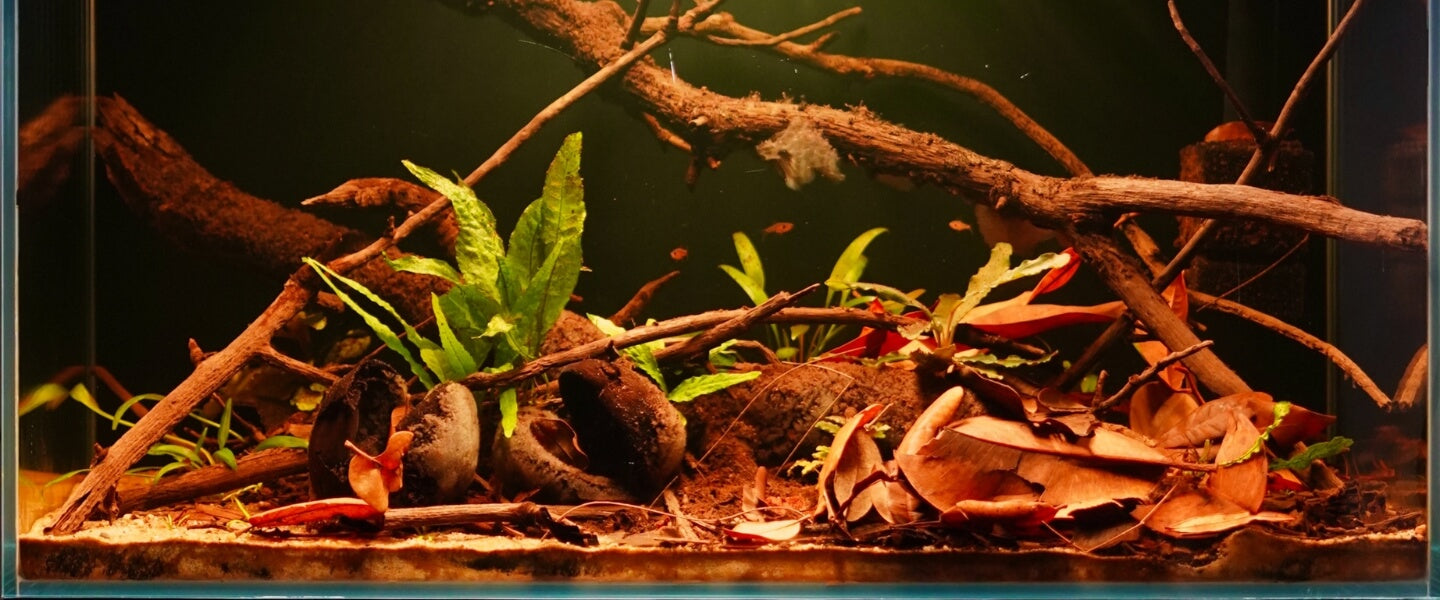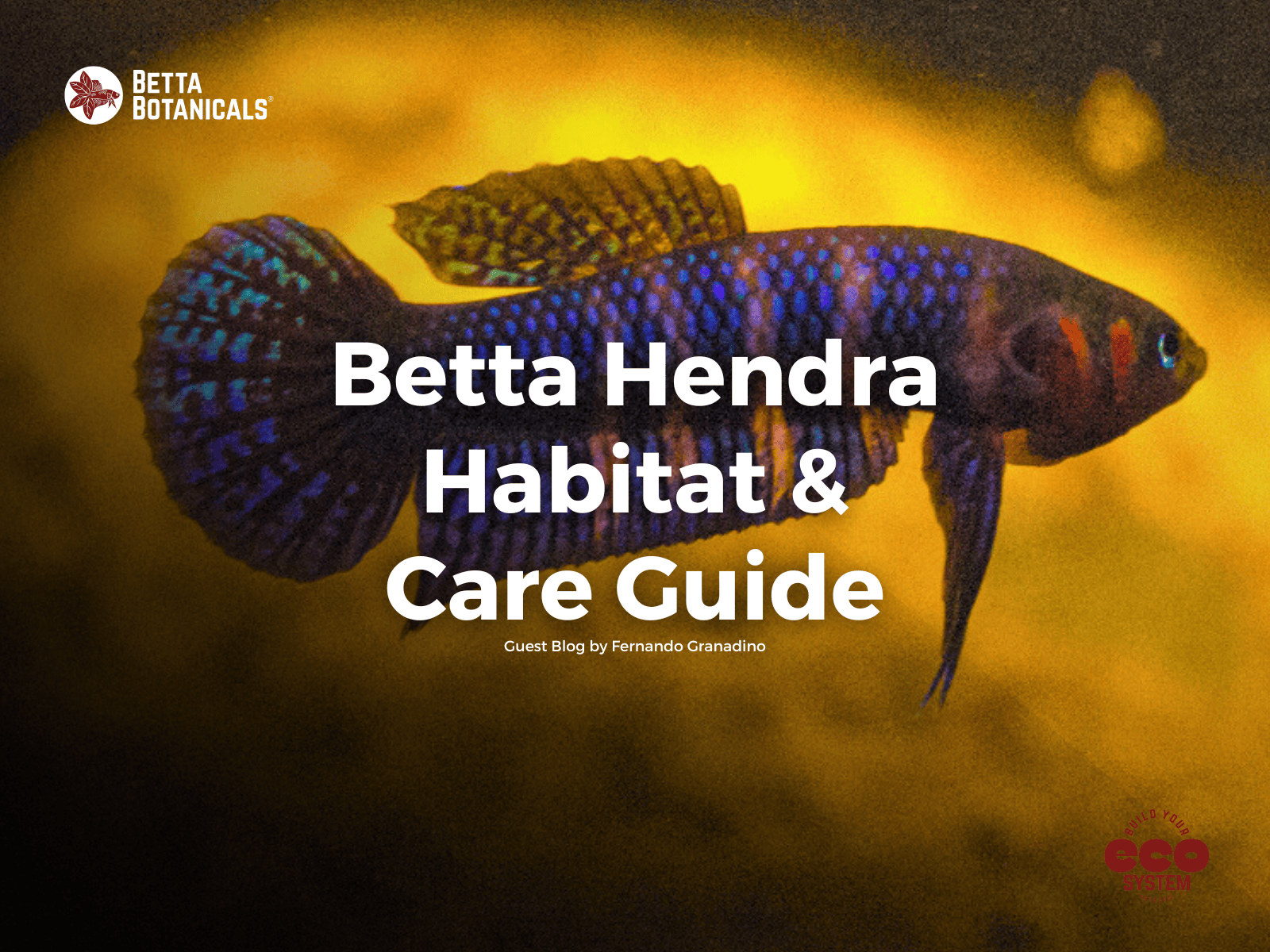The Wondrous And Mysterious Life Of Little Bugs In My Aquarium
Amphiods are seen as detrimental to shrimps, but they make great free fish food.
Why Are There Little Bugs Moving In My Fish Tank?
You may have noticed while starting at your botanical aquarium that you now have some small creatures moving in the water column or along the substrate. Usually this is my sign that a new botanical tank is cycled and ready for fish, after all invertebrates generally are more sensitive to water conditions compared to fishes. Curiosity can get the best of you and learning more about these creatures can lead to hours of research. These tiny creatures are lumped into the term microfauna which include aquatic worms, protists, and crustaceans generally smaller than larger fauna like snails and shrimps. So, the dying question many people have asked, "How did these small bugs get into my aquarium?!".
Not all microfauna is welcome though, including predatory Damselfly and Dragonfly larvae.
Origins of microfauna In The Blackwater Aquarium
Aquarium microfauna are astounding when you think about the variety that can appear from thin air... or so it seems. Certain microfauna get introduced from the botanicals themselves, believe it or not. How can this be when most of the time botanicals get boiled before introducing them to our aquariums.... Well, many microfauna have the ability to go dormant or lay eggs that hatch once waters return, like commonly available brine or fairy shrimp. Once returned to water these organisms explode in growth, taking advantage of the new resources available to them. So while they might not be surviving the boiling process, their eggs can be transfered through tap water, nets or scaping tools from different aquariums, or shared sponges. Another common method of introduction is when plants are added into aquariums, lots of microfauna live on plants and can be introduced this way. Snails are most commonly introduced to aquariums this way. Tissue culture plants will not introduce microfauna though due to the sterile growing conditions. Moving substrates or media from other tanks is another common way for microfauna to be introduced into your aquariums as well. Some people (me included) will even buy cultures of microfauna, which I will touch on later.
Spineless Crustaceans of Botanical Aquariums
There are thousands of microfauna to talk about and not enough words to do that here so I will only cover the basics of commonly found species in botanical aquariums. There are generally three main categories of microfauna:
- Free-swimming: Much of the free-swimming microfauna is the most noticeable, which includes Amphipods, Copepods, Ostracods, Daphnia, Moina, to name a few. All of these make great feeders and are safe for livestock, except Amphipods with dwarf shrimp as their compatibility is questionable. Botanical aquariums can even hold breeding communities of Amphipods, Copepods, and Ostracods. Daphnia and Monia rarely last very long in botanical aquarium due to their pelagic lifestyle and need for free floating algae as their food source.

Ostracods make great supplemental food for fry and small fishes.
- Benthic: Looking around your botanical method aquarium hardscape and substate can show a whole new community of microfauna. Benthic microfauna includes aquatic worms (detritus, polychaeta, blackworms), Snails, Hydra, Planaria, Leeches. This selection of microfauna is the most controversial on how safe they are for livestock. Leeches, Planaria, and Hydra all have raps of being killers, but most leeches found in botanical aquariums are snail specific. Planaria and Hydra can be unsightly but in a healthy community they only add to the ecosystem. Snails and Aquatic worms can help control algae which might be signs of poor husbandry. I see them all as having a role as well as potential supplemental food sources to the fish.

Love them or hate them; snails are great at getting algae from hard-to-reach places.
- Microscopic: Some of the most important microfauna is truly microscopic in size but foundational in botanical aquariums. Beneficial bacteria, Euglena, Paramecium, Vorticella are just a few of these foundational microorganisms. Most go unnoticed in botanical aquariums unless in vast congregations. These microorganisms also provide some of the first foods that young fishes consume in botanical setups.

These microorganisms showed up one day off some aquarium plants and thrived.
Detritus And It's Role In Microfauna Cultivation
We say it all the time here at Betta Botanicals, detritus caused by the breakdown of botanical materials is not a concern for overall aquarium health. In fact, the opposite is true, a healthy layer of detritus in a botanical aquarium improves the overall health and quality of the system. Do not, under any circumstance, remove detritus or disrupt the layers of detritus in your botanical aquariums (okay but removing a quarter size amount here or there during a water change wouldn't be the end of the world!). Colonies of beneficial bacteria live in your detritus, removing detritus could create imbalances of your bacteria populations. These detritus layers are what cause the long-term stability of your botanical aquarium. Aside from just being a major biological component of your botanical aquarium, your detritus is a buffet for your fishes. In the wild fishes will constantly pick around leaves and other structures to gain food sources. Just like in nature you can also provide this same behavior with a healthy detritus layer. Many of the microfauna discussed above rely on a detritus layer for cover and breeding grounds. Keeping detritus will introduce a whole new variety of foods to your fish’s diet and while these fishes could live just off microfauna, I recommend a more balanced diet and think of microfauna as grazing snacks. Like animal crackers.

You can see just how important a detritus layer is for microfauna to reside in.
Using Leaf Litter To Cultivate and Grow Microfauna
Thai cutch bark is an amazing matrix of tight spaces that increase surface area while also breaking down into detritus at faster rates providing habitats for all types of microfauna. Microscopic microfauna seem to really love hanging out in the matrices of Cutch Bark. Betta Tea packets excel at detritus introduction as well as a protected area to reside without fishes constantly picking them off. The packets eventually fully break down and introduce the microfauna hotspots and newly formed detritus into your aquarium. Blackworms and other aquatic worms thrive in the old Betta Tea packets, Ostracods also like to colonize these packets. A healthy leaf litter layer will also help provide spaces for microfauna to thrive in as well as food sources for amphipods and snails. Cones specifically Magnolia and Casuarina are great hot spots with tons of nooks/crannies for microfauna to live in. I have noticed that Copepods, Ostracods, and other microscopic protozoa swarm these cones. Lastly, larger seed pods like Cariniana and Dregea pods are great shelter spaces for numerous species of microfauna and other invertebrates.

Indostomus require near constant amounts of food, microfauna populations are key to long-term success.
Stocking Microfauna To Supplement The Food Web
The easiest way to stock microfauna is to create your own infusoria. Simply add a handful of Timothy hay, blanched lettuce, or yeast to a jar and fill that with aquarium or tap water. Place the jar in the sun and wait a few days, once the initial cloudiness passes you can add the infusoria to your aquarium. Obtaining larger microfauna usually requires purchasing from local hobbyists, stores, or biological supply companies. Avoid collecting microfauna from the wild due to unknown contaminants and parasite loads, many invertebrates are primary vectors for countless parasites. Carolina Biological is my go-to place for all things microfauna cultures, eBay is also another place to get microfauna. Blackworms are some of the best substrate dwelling microfauna and the greatest grazing food for fishes. Amphipods are another fundamental species I stock; they are great at breaking down botanicals and grazing on algae. Copepods and Ostracods round out microfauna that I strive to include in all my tanks. These microfauna are great supplemental food that breed constantly. Probably the best bang for your buck is some of these “mixes” like Pond Mix for smaller species, Dry Pond Mix is great to mix into substrates before adding water, and lastly the Mixed Crustaceans is my personal favorite as it contains Copepods, Amphipods, Ostracods, and Daphnia. eBay has some cool products as well to checkout like some Monia/Daphnia egg pills, Rotifer pills, and Fairy shrimp pills. Personally, I have yet to try them, but I have heard they work wonders.
As always, I hope you learned something have been inspired to try out some of this information on your personal botanical aquariums!
About the Author: Meet Calvin Darling, a Botanical Aquarium Enthusiast
About Me: Hello blog readers, my name is Calvin Darling, and I am a member of the #TanninBae Ambassador program with Betta Botanicals. I have been keeping aquariums since I was 4 years old but have been keeping botanical method aquariums for the past three years. I specialize in biotope-inspired aquariums with an emphasis on inconspicuously colored fish and uncommonly kept livestock as well as root tangle scapes. My go-to botanicals must be Live oak, Shingle oak, Mokha pods, Parviflora pods, and Melastoma roots.











Inspire your friends:
Sparkling Gourami: Comprehensive Care And Habitat Guide
The Importance of Aquarium Substrates for Botanical Method Aquariums